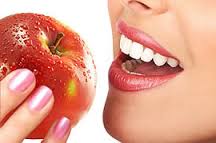Periodontal Disease is the result of an inflammatory response which is the result of an interaction between pathogenic bacteria and the host’s immune response. There is data which supports the fact that nutrition, particularly antioxidants, can influence and halt the onset and progression of periodontal disease, along with provide optimal wound healing.
The current knowledge that we have regarding periodontal disease, its processes involved with the onset and progression of this disease, is far more advanced today than ever before.
One way to provide patient care beyond the operatory is to identify risk factors, predecessors to periodontal disease, vascular disease, rheumatoid arthritis, diabetes and other systemic diseases.
When a patient presents with one risk factor it is highly predicable that the speed of onset, severity and progression of other diseases is very likely to occur.
If we want to provide overall health to our patients and with the opportunity in today’s world, to move beyond the mouth, we must understand the other factors involved with prevention of systemic diseases.
In order to treat overall health we must look at a complete health history which will include family risk factors such as cardiovascular disease, (including stents, by-pass surgeries, valve replacement, congestive heart failure) heart attacks, hypertension, high cholesterol, metabolic syndrome, obesity, strokes, (TIA and CVA) vascular changes, (or changes later in life involving dementia) rheumatoid arthritis, lupus, psoriasis, and parents who are edentulous, have a history of periodontal disease or bleeding gums. This also needs to be considered a red flag for a patient who includes this in their personal health history.
Think of your patient assessment as having multi-layers during the evaluation process. Patients who are free of disease still need to have their family health history evaluated and as a clinician you need to be aware of any red flags in their oral and overall health. Many patients will not have any signs of periodontal disease but they will have a family history and possibly a personal history of hypertension, high cholesterol, rheumatoid arthritis, etc. Become aware of the comprehensive risk assessment that needs to occur.
In past years we have practiced dentistry based on the “end-stage disease model” which means we do not treat until we know the patient has the manifestation of disease. Today’s dentistry allows us to transition our daily practice into a wellness practice model. Comprehensive assessments and preventive adjuncts are what allow us to care for our patients’ total health.
Today’s dental practice must transition into a patient-centered-wellness model. This will include specifically targeted nutritional supplements for the patient’s home-care regimen. This is not only for patients who present with periodontal disease but this can and should be used as a prevention model. When we combine natural alternatives
(Assessment of carotenoid score and nutrition, micro-nutrient supplementation for prevention) with traditional therapies, we have a strong business model that not only includes another profit center but shows a promise of modifying systemic risk-factors. This is also a cost effective way to potentially reverse the patient’s disease process.
With the introduction of the Biophotonic Scanner, (Pharmanex) which objectively measures patient antioxidant status, non-invasively, (within 90 seconds) this provides the healthcare professional with a proactive risk-monitoring device. This technology appears to provide the dentist with information relevant to early diagnosis and intervention of periodontal disease, which will now lead us to more predictable treatment outcomes. Assessment utilizing the Biophotonic Scanner takes no longer than 90 seconds. This is life-saving technology. A Win-Win for all!
Adding the biophotonic scanner and supplementation for prevention of disease can add a minimum of $50,000.00 US to your Dental Hygiene Department profitability. Use of the biophotonic scanner takes only 90 seconds and anyone in the dental office can communicate about the use of supplementation. After the 1st discussion this becomes routine and usually no more time with patient implementation is necessary. There is no cost to the dental practitioner to lease or purchase a scanner. There is no inventory to be stored in the office.
Dental Practice Solutions and The JP Institute will train your team on this technology at very little to no cost to you.
Please contact Debbie for a complimentary evaluation of your DH Department to see if you qualify for little to no-cost training on this technology.
-->


 Follow
Follow